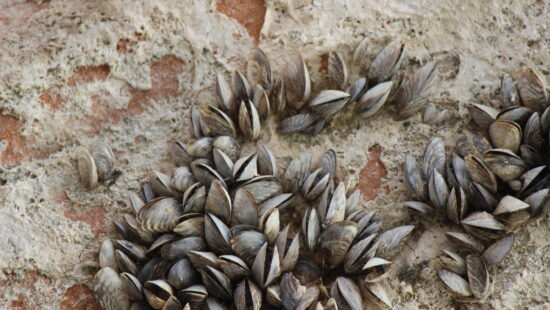Wildlife
DWR launches new online dashboard to mitigate wait times at inspection stations

Photo: DWR inspecting watercraft for mussels at Lake Powell. Photo: Utah DWR
SALT LAKE CITY – While boaters should contact the Utah Division of Wildlife Resources to schedule a quagga mussel decontamination for their vessel, it has also launched a new online dashboard to help the public gauge how busy the state’s inspection stations are.
After quagga mussels were discovered in Lake Mead in 2008, the DWR began inspecting boats for mussels. After being discovered in Lake Powell in 2012, quagga mussels were confirmed in Utah. Since then, the prevention program has expanded to include more than 40 inspection stations throughout the state, including those located at boat ramps and along highways.
As of August 18, DWR and Utah State Parks staff had completed 181,958 inspections and 3,289 decontaminations. Quagga mussels have been discovered on eight different boats. This year, Lake Powell inspection stations have been the busiest, performing 43,116 of the total inspections. The top three busiest inspection stations are at Deer Creek Reservoir and Sand Hollow Reservoir.
“This dashboard is a great resource for the boating public to see which inspection stations are open and actively performing inspections and decontaminations for quagga mussels,” DWR Aquatic Invasive Species Lt. Bruce Johnson said. “The webpage also shows boaters which waterbodies receive the most boat traffic and which inspection stations are the busiest, so they know what to expect before making a trip. That information is important, especially this year when we have had staffing shortages at many of our stations.”

To prevent the spread of mussels, all watercraft leaving Lake Powell are required to undergo an exit inspection. After a watercraft has been inspected, it must still be decontaminated before it can be launched in a different body of water. If a decontamination is not possible, the watercraft must wait the required dry time before relaunching.
Utah requires seven days of dry time after boating on Lake Powell in the summer, 18 days in the fall and spring, and 30 days in the winter. Wakeboard boats, on the other hand, are defined as complex boats that, regardless of the time of year, require a 30-day dry time unless professionally decontaminated.
While the inspection and decontamination program is a crucial component of preventing quagga and zebra mussels from spreading to other waterbodies, DWR biologists also conduct periodic sampling at Utah waterbodies to look for the presence of multiple types of invasive species, such as mussels, mollusks, and aquatic plants.
Sampling is also done at DWR fish hatcheries and other fish spawning grounds. This early detection program was launched in 2007, and samples are typically collected between April and November when water temperatures exceed 50 degrees Fahrenheit.
“Aquatic invasive species sampling work can be challenging due to the large number of reservoirs we have to sample around the state,” DWR Aquatic Invasive Species Biologist Richard Gibbs said. “Each biologist samples over 50 waterbodies with over 11 million liters of water filtered during a sampling season.”
Since the program’s inception, sampling results have revealed quagga or zebra mussel veligers in Red Fleet and Electric Lake in 2008, and in Deer Creek Reservoir in 2014. However, after years of control and containment measures and consecutive years of testing and monitoring that yielded negative results, the waterbodies were all later confirmed clear of quagga mussels. Currently, Lake Powell is the only body of water in Utah with quagga mussels.
To learn more about mussels in Utah, please refer to the DWR’s website.


















